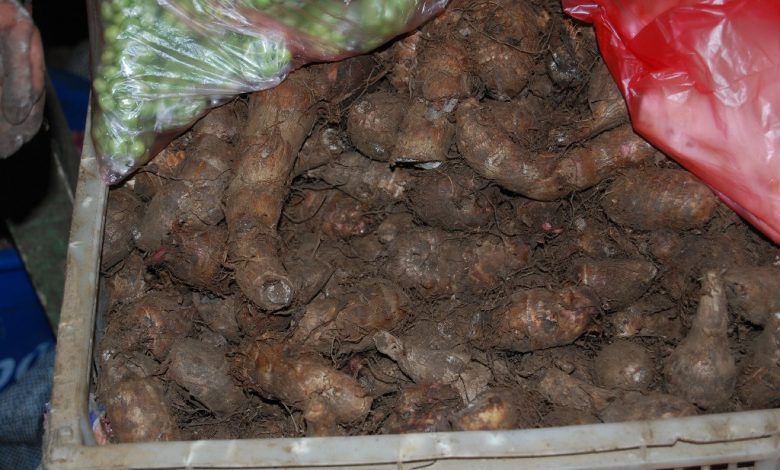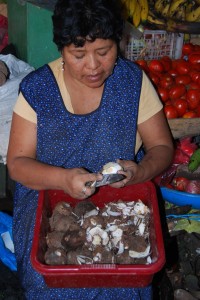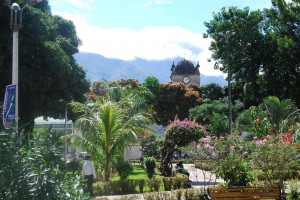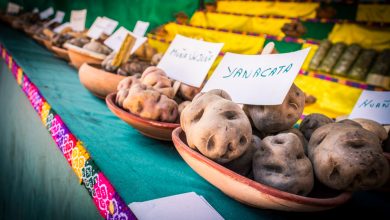The Uncucha, an Important Root Crop

Peru is a land of root crops. The potato originated here in all its rainbow of types. But it is also a land of others, such as sweet potato, yuca, and various indigenous ones that are hardly known outside its borders. Here, though, these tubers are part of a rich and varied diet that enabled civilization to grow and spread.
One of these is called locally uncucha, although it has other names in the Spanish of other parts of the new world, such as yautía, malanga, etc. And, its season is just coming on.
The corm of a tropical plant callled scientifically Xanthosoma sagittifolium the uncucha has been farmed for millennia in the lowland forests and tropical valleys near Cuzco. It is like a potato in that it is starchy and can be cooked in all the variety of ways potatoes are cooked. In fact, it fills a similar role as an accompaniment to meat in many regional dishes.
The uncucha is known to tropical plant enthusiasts as an edible variety of the arrowleaf elephant ear. This plant with its very large leaves that drape like the massive ears of a pachyderm finds itself in many gardens and its corms are sold in garden shops and nurseries throughout the United States, Europe, and Australia.
As a food, it is grown and eaten throughout lowland South America, as well as in Central America and the Caribbean. Puerto Ricans look at it as a part of their signature cuisine. But the plant and its consumption originates in the Western Amazon near Cuzco where Incas and their highland ancestors came into productive contact with lowland peoples. This contact is represented in dances such as the ch’uncho recalling lowland peoples and their role in Inca life.


The markets of Cuzco will soon be receiving uncuchas from the upland jungles of Quillabamba, which is downriver from Machu Picchu. Known today mostly as a region that produces outstanding coffee and cocoa, the area near Quillabamba has been an important zone of encounter of highland and lowland, as well as a place where much food is produced for trade and export with the up-river city of Cuzco.
The uncucha spread widely because it is easily adapted to warm, moist soils and is not tied to just one ecological niche.
This valuable corm, often called a tuber, has much nutritious value. It is a source of beta carotene from which comes vitamin A, a necessary nutrient for the proper growth and development of Cuzco’s children along with another nutrient of the uncucha, vitamin C. These vitamins combine in the uncucha with iron, starch, carbohydrates, fiber, calcium, thiamine, and ascorbic acid. As a result it is strongly recommended locally that pregnant women consume uncucha at the same time people argue it will help avoid stomach cancer and liver problems.
Though widespread, nonetheless the uncucha faces challenges in cultivation. Its biggest problems is called the “mal seco” or “dry off”, a disease cased by a combination of fungi (Rhizoctonia y Phvtium) and bacteria (Erwinia, Pseudomonas) that attack the young plants. They cause the leaves to wither and the crown to rot.
Currently it is difficult to control this disease, since agricultural science is only just starting to take an interest in this important crop. The problem is currently controlled by growing the crop on humps and rotating fields.

Although the crop will soon find its way to Cuzco’s markets, the uncucha is one of the lesser consumed of the Andean root crops. Nevertheless the chefs who are developing novo-Andean cuisine are working it into their culinary base. They are enchanted by the possibilities of its flavor, its color varieties, and its texture.
As a result, uncucha may well appear on your menu in Cuzco.




